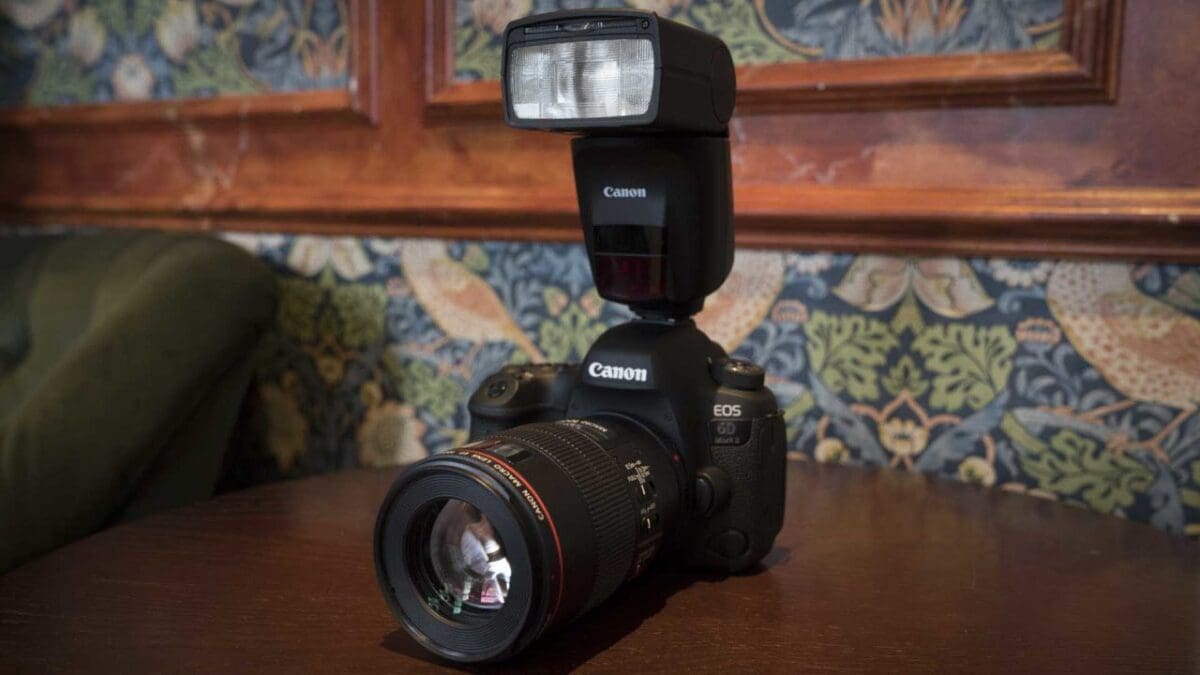When we think of flashguns we tend to overlook how much diversity there is in the market between high-end units and those at the budget end. There’s a wide array of features to consider, and choosing the best flashgun for your camera and photographic needs can feel overwhelming.
Before we count down our list of the best flashguns on the market today, lets quickly run through some of these key features you’ll probably want to have. And let’s start by answering some common questions.
How is flash exposure calculated?
There are four criteria that factor into your flash exposure:
- The power of your flash
- Your flashgun’s distance from the subject
- Your ISO setting
- Your aperture
If your flashgun is set to its manual mode, you would be responsible for determining the best exposure based on these factors. However, many of the best flashguns will have a TTL flash mode that does this for you.
What is TTL flash?
TTL, or through-the-lens, flash is a method of flash metering that harks back to the days of film and has evolved to support digital camera technology. In essence, in TTL mode your camera will determine the brightness of your flash by firing a quick pre-flash burst of light and measuring the brightness of its reflections into the lens elements.
Your camera and flash then work together to adjust the power to produce a good exposure. Sounds clever? It really is!
What is bounce flash?
Bounce flash is a time-tested technique for portraiture that softens the light from your flasghun by bouncing it off a wall or ceiling before it hits your subject. In other words, you are diluting the harshness of the light.
To this end, most flashguns these days have bounce and swivel heads that allow you to angle the light away from your subject. When bouncing flash you’ll want a flashgun with a high Guide Number – or in other words, a higher maximum power.
How do I trigger a flash off-camera?
Many photographers use their flashguns off-camera to experiment with light to create a variety of different looks. To trigger your flash off-camera it needs to have what is called master/slave capability.
This feature allows you to trigger the flashgun wirelessly either using an infrared link from your camera or via a radio frequency (RF) trigger. You can even group together multiple off-camera flashguns for truly spectacular effects.
What are motorized zoom heads on flashguns?
Generally, all top-end flashguns – and some mid-range models – will feature motorized zoom heads that automatically track the focal length you’re using on your lens.
These will emit a narrow beam of light when shooting at the telephoto end of your focal range. Or if you’re shooting wide-angle, you’ll typically find a built-in reflector that flips down to help spread the light.
What are the best flashguns to buy?
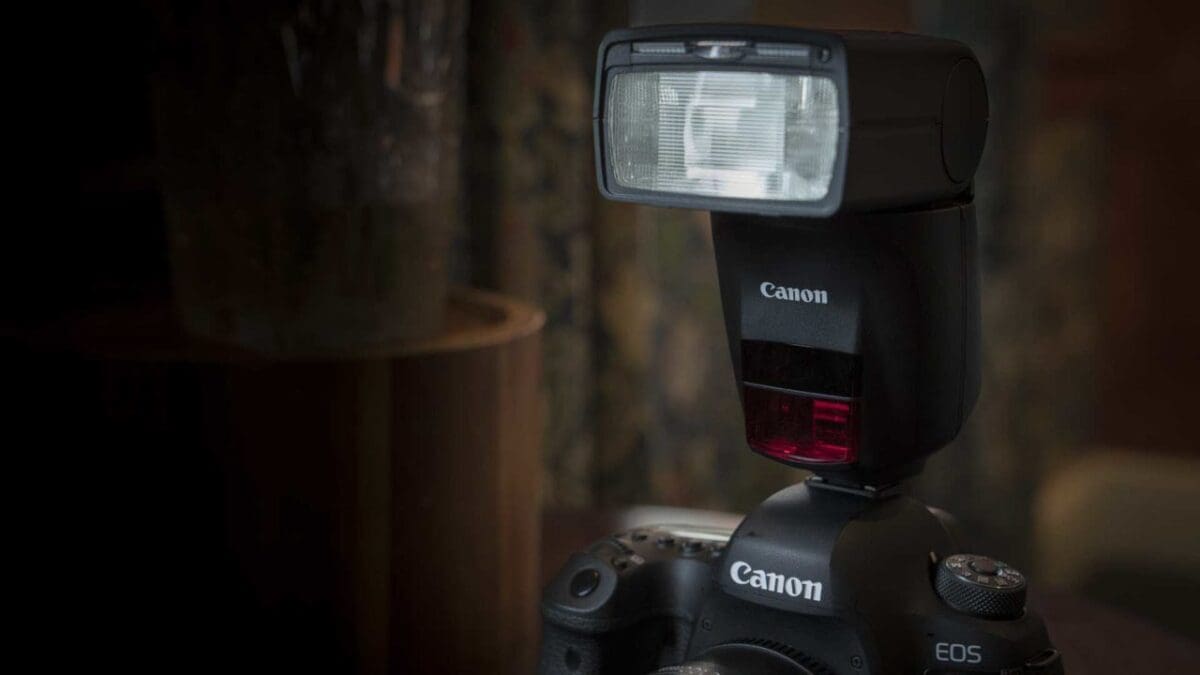
Canon Speedlite 470EX-AI
- AI tech calculates angle for flash
- Guide Number 47
The Canon Speedlite 470EX-AI is a flashgun that’s designed for use in the hotshoe of Canon DSLRs and mirrorless cameras to provide illumination. With a Guide Number of 47 (measured in meters at ISO 100) it sits in the middle of Canon’s flashgun range for power.
A new feature called AI Bounce that makes it incredibly easy to use, especially when you’re shooting a moving subject or you switch frequently between landscape and portrait orientation.
The new technology is specifically designed to help with bounced flash photography. This is when the flash/strobe light is bounced off a ceiling or wall to give softer, more uniform lighting than can be achieved by pointing the flashgun directly at the subject.
The artificial intelligence (AI) calculates the ideal angle for the flash head and moves it into position automatically. Alternatively, there’s a semi-automatic option that lets you set the angle of the head and then when you move the camera, it automatically adjusts the head to maintain the same bounce angle.
The head has a rotating range of 180 degrees left and right, and can be tilted 120 degrees upwards. These movements can be made manually or by the AI Bounce system.
The Speedlite 470EX-AI’s motorised head covers a focal length range of 24-105mm and there’s a built-in adaptor to disburse the light further so it can be used with lenses with focal lengths as shot as 14mm.
According to Canon the Speedlite 470EX-AI recharges to full-power in 5.5 seconds when using 4 AA/LR6 batteries, or 3.5 seconds with rechargeable NiMH batteries. There’s also a high-speed sync function to enable it to be used with fast shutter speeds to freeze movement or allow wide apertures to be used outdoors.

Hahnel Modus 600RT
- Guide Number 60
- 1.5sec recycle time
The Modus 600RT offers an impressive Guide number of 60 (m ISO100 @200mm), a powerful rechargeable battery which enables over 500 full power flashes per charge, and full compatibility with the Viper wireless flash system.
It’s been built to appeal to the strobists who love to use lightweight flashguns to create sophisticated lighting set-ups, and as such the Modus 600RT packs in the features.
Functions include Master or Slave, built in digital 2.4GHz wireless, it’s compatible with 3rd party as well as Hahnel triggers, offers 1.5 sec recycle times, Multi flash mode for strobe effects, TTL, full manual, 1/8000 high-speed sync and USB for firmware updates.
The Viper is an equally impressive piece of kit and as well as working wirelessly with the Modus 600RT can also be used with other Viper units. It features the ability to control three separate groups of flashguns and uses a 2.4GHz wireless frequency that works up to 100m.
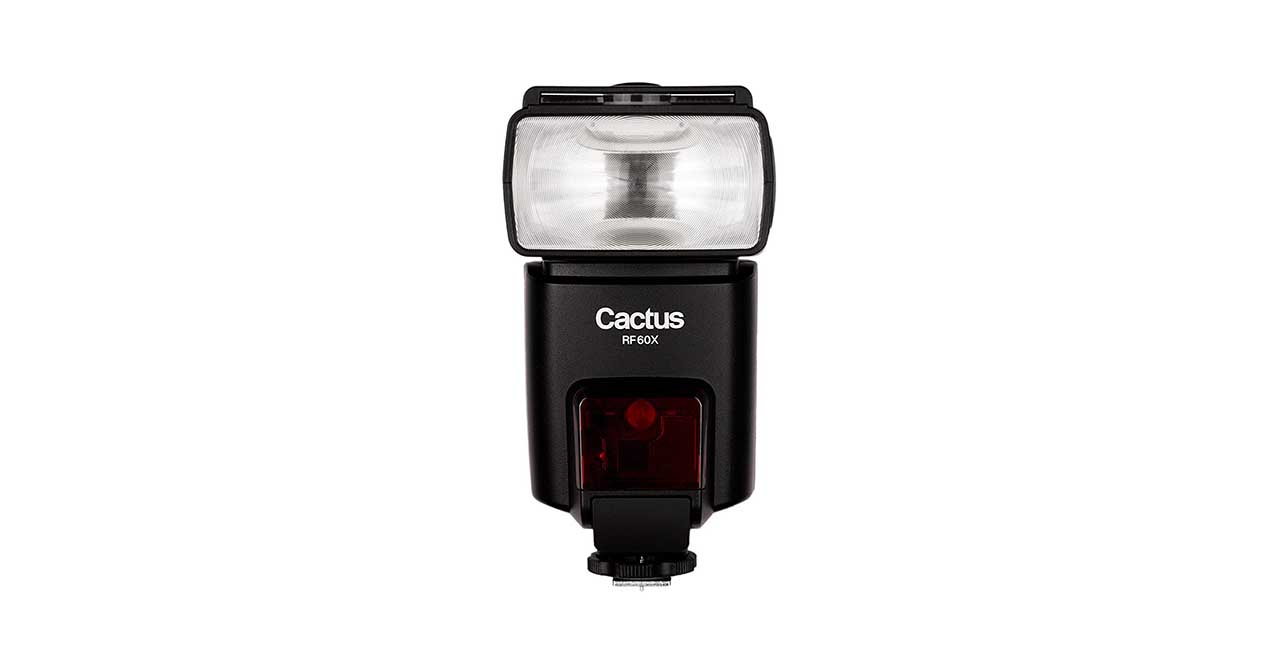
Cactus RF60X
- Built-in Optical Sensor
- Built-in transmitter/receiver
The Cactus RF60X Universal Wireless Flash is a 2.4GHz radio-based, portable flash with a built-in wireless transceiver that supports X-TTL with the Cactus V6 II / V6 IIs wireless flash transmitters, as well as high-speed sync and Focal Plane mode.
While its design is admittedly a little chunky, the Cactus unit packs a powerful punch and is very easy to use with all Canon, Nikon, Fujifilm, Sony, OLympus, Panasonic, Pentax and Sigma cameras.
The RF60X offers three modes: Local, for on-camera use; and Master and Slave modes for off-camera flash. In Master mode the RF60X can control an unlimited number of RF60X units set to Slave mode from distances up to 100m.
Recycle times are 1.9secs, the RF60X’s AF Assist light can also be used off-camera when the unit is in Slave mode. It also boasts a Cooling Mode that regulates the temperature of the flashgun to maintain optimal performance.

Metz 64 AF-1
- Guide Number 64
- Large colour touchscreen with auto-rotate function
Metz’s high-performance flashgun is a best-seller thanks to its well-balanced illumination and user-friendly controls. At the heart of these controls is a new rotating touch display with colour lighting and touch capability allowing users to make quick adjustments.
A newly designed motorized head can illuminate focal lengths from 24 to 200mm. And with a guide number of 64, its powerful enough to provide bounce flash in most situations.
Other nice design touches include a USB port for quick firmware updates and a compact, portable body.
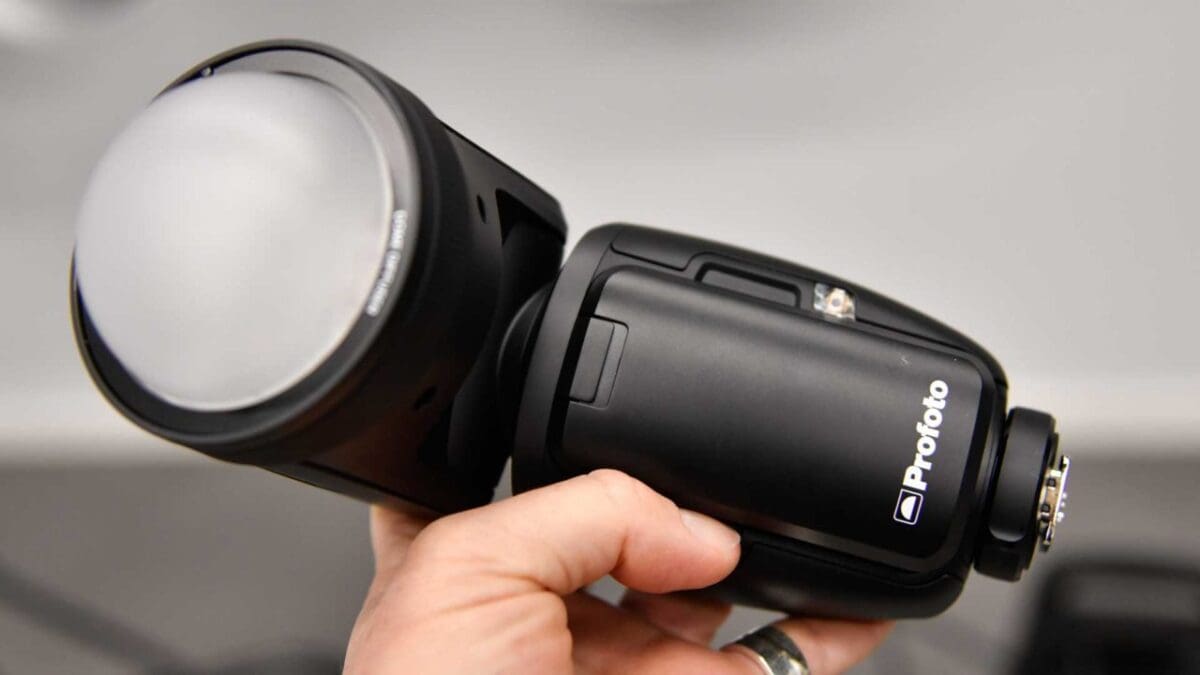
Profoto A1
- More natural light than from a standard speedlight
- Air TTL built-in
Profoto is calling the A1 the World’s smallest studio light, but as many observers have pointed out, it looks a lot like a speedlight (aka flashgun) and it can be mounted in Canon, Nikon and Sony camera hot-shoes.
However, Profoto’s high-quality studio light manufacturing heritage is evident and the company’s Air TTL system is inside allowing the flash to trigger other flashguns remotely and use the camera’s TTL (through-the-lens) exposure metering system.
Unusually, the A1 has a round lens and its Fresnel design is very distinctive. It seems a small point, but the more traditional rectangular design of flashgun head was originally conceived to pump light out across a rectangular film frame to alter the exposure. Profoto is more interested in helping people work with and shape light for more creative images. The circular form is also a closer representation of the sun so that catchlights have a more natural shape.
With a power rating of 76 Ws, which is roughly equivalent to a guide number of around 40, the A1 may not seem the most powerful flash but the Fresnel lens and flash tube is designed to help make better use of that light than some other flash units.
Some speedlight or flashgun users may be surprised by the Profoto A1’s price and relative lack of power in comparison with some other flash units but the A1’s strong suit is its light quality and speed of operation. The lens and internal reflector have been designed to enable it to produce natural looking light with gradual fall-off.
It’s also well-built and designed to survive extended use of high speed sync mode.

Phottix Mitros+
- Trigger flashguns from 328 feet away
- Guide Number 58
Phottix Mitros+ flashgun is the company’s flagship model and incorporates the company’s Odin transmitter and receiver and Strato II receiver all-in-one. This all-in-one functionality allows you to fire the Mitros+ from up to a staggering 328 feet away.
As well as this built-in IR triggering for both Master and Slave modes, you also get AF Assist, TTL functionality, manual and multi-stroboscopic modes.
Its flash zoom covers focal lengths from 24 to 105mm, and it boasts a Guide Number of 58. Another handy feature are its three built-in location memory settings. If you use a similar setup frequently, you can recall these settings and custom functions from the device’s memory.
We like the Mitros+ because you can use it on-camera as a fill light as well as control other Mitros+ flashguns using Odin receivers.
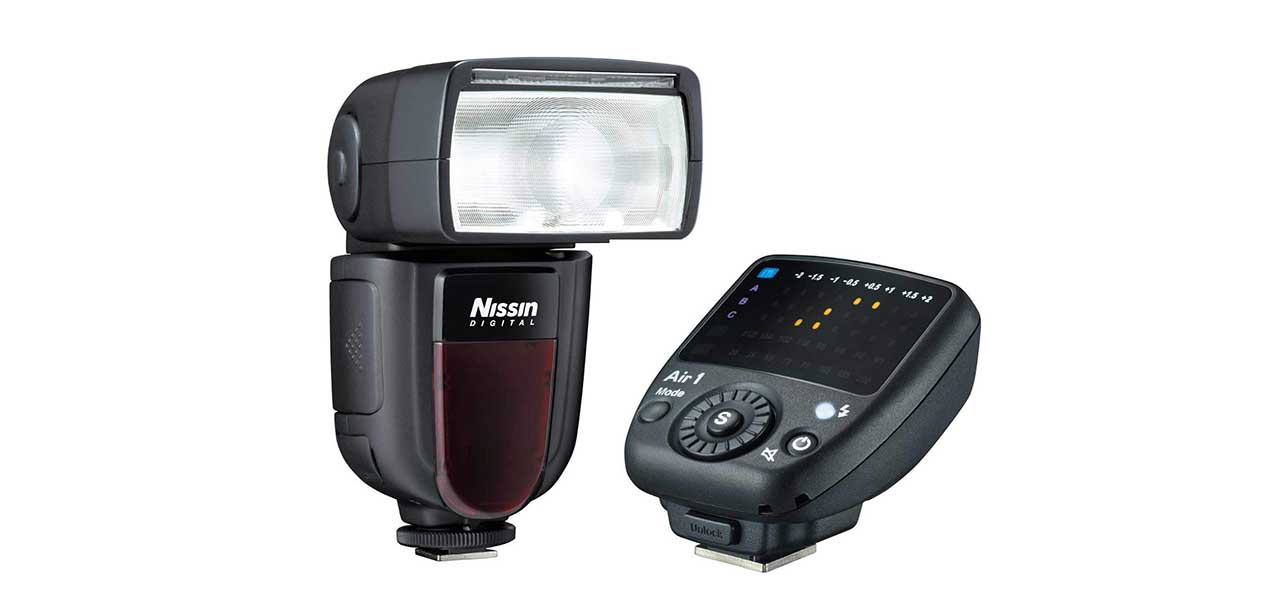
Nissin Di700A + Air
- Guide Number 54
- Manual zoom coverage of 24 to 200mm
Nissin’s Air System uses a built-in 2.4GHz radio transmission that affords a 98-foot triggering range. This means you don’t need an additional receiver to fire this flashgun.
The Di700A also offers TTL functionality at its modest price tag and is one of the more powerful units on our list of best flashguns for your camera with a Guide Number of 54 at 200mm.
Other nice features include rotating lock release buttons for the flash head, support for high-speed sync up to 1/8000sec, an external power socket and sockets for PC and 3.5mm sync.
In our opinion, Nissin’s Di700A is one of the best bargains out there.
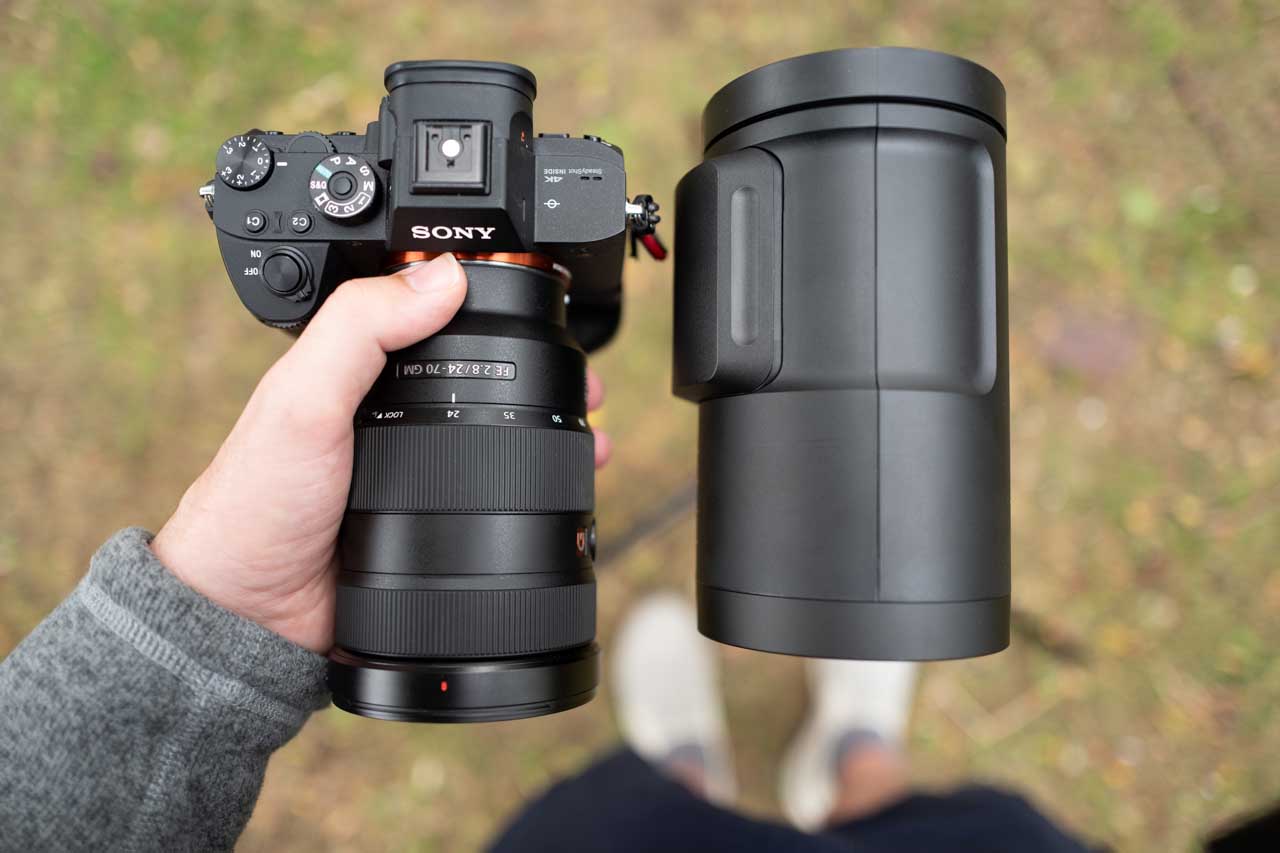
Profoto B10
- Max energy: 250Ws
- Energy range: 10 f-stops (1.0-10)
- HSS energy range: 10 f-stops (1.0-10)
The Profoto B10 is a small, lightweight, portable and powerful studio strobe. At 250Ws, it may not have the headline-grabbing power numbers of some Chinese flash brands, but don’t be fooled; the Profoto B10 packs a powerful and technological punch.
Profoto‘s B10 is a portable cordless off-camera flash that’s designed to slip in your bag amongst your lenses. At 250Ws, it produces around 5x more light than the average speedlight or flashgun.
There’s also a powerful modelling light built in which can be used as a continuous light for stills or video.
Naturally, the B10 is also compatible with Profoto’s studio accessories and it has a removable stand mount.
The B10’s rechargeable battery is removable for separate charging, but it can also be charged while you’re using the light.
In the real world, the Profoto B10, with its clever inbuilt flash reflector, produces enough light to do everything you will ever need to do. And given the sturdy build and Profoto’s reputation for making reliable equipment, we have little doubt that the Profoto B10 will work when you need it well into the future.
